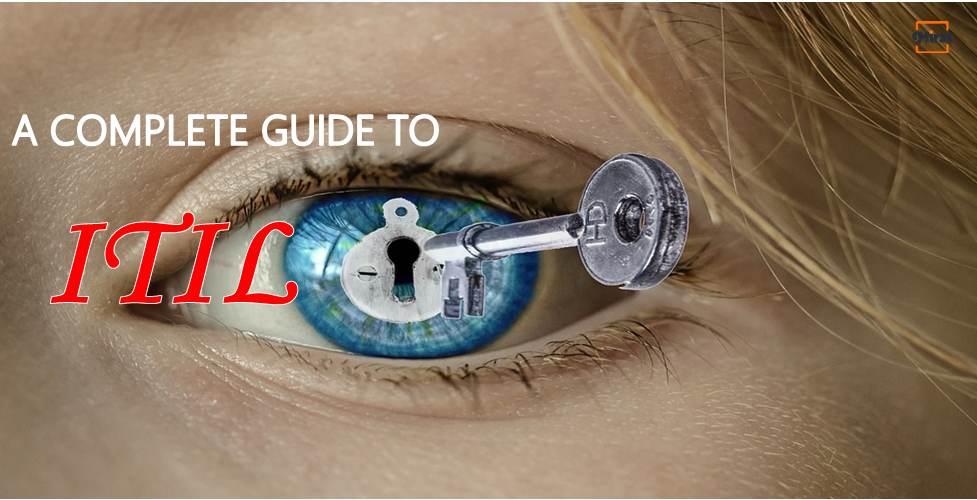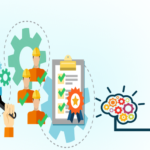What is ITIL?
ITIL (Information Technology Infrastructure Library) is defined as a set of guidelines with instructions for how you can provide the best services possible. ITIL is an approach of how to do IT service management. While ITIL is not the only method to perform ITSM, but it is the most popular one.
ITIL best practices is descriptive in nature, it is non-prescriptive. This implies that ITIL doesn’t prescribe any specific pointers that one has to follow while applying ITIL. ITIL has a set of guidelines that helps an IT practitioner in delivering the best services. These guidelines are based on ITIL 5-lifecycle stages books like strategy, design, transition, operation, and continual service improvement.
Some of the benefits of ITIL are:
- Low cost: It helps businesses to improve service levels and reduce the costs of IT operations
- High quality of IT services: The goal of ITIL is to enhance efficiency and to achieve high service quality
- Increased business productivity: It aims to increase the productivity in IT businesses
- Improved ROI: It assists in providing higher returns on investment
- Greater customer satisfaction: It also provides better customer satisfaction
- Improved Resource Utilization: ITIL improves utilization of resources
History of ITIL
The use of ITIL best practices started in the 80s in Her Majesty’s Stationery Office (HMSO) in UK on behalf of the Central Communications and Telecommunications Agency (CCTA). Later the version v2 was released following which the version v3 was released in 2008. This was revised in 2011 as ITIL v3 2011.
- ITIL v1 was created in the year 1989 to standardize IT service management.
- ITIL v2 was introduced in 2001 to perform a uniform structure for service delivery.
- ITIL v3 was updated in 2007 with a feedback looping feature in order to improve ITIL service lifecycle.
- ITIL v3 2011 is an upgraded version of v3 and clarifies processes of v3
- ITIL v4 has been released in 2019. It has a flexible and integrated system for effective management of IT-enabled services.
Types of ITIL
There are five versions of ITIL:
-
ITIL v1: ITIL v1 is all about processes that are involved in service support, such as – help desk management, change management and software distribution. Organisations around the world began to adopt the framework in the early 90s to improve their services and delivery cpabilities. ITIL v1 consists of four major concepts:
-
Available management: This ensures that IT services (infrastrcuture, processes, tools, roles, etc.) are available based on the business requirement.
-
Capacity management: It focuses and manages any performance-based issues, related to both services and resources.
-
Contingency management: It helps in identifying vulnerabilities and heps in preventing such incidents.
-
Cost management: It helps in developing and managing cost effective IT assets and resources.
-
-
ITIL v2: This version of ITIL was published in year 2001. It focuses on removal of duplicate entries, helps improve the consistency of topics and inclusion of new IT concepts. Some of the topics covered in ITIL v2 are problem management, release management, incident management and much more. ITIL v2 consists of two major concepts:
-
Service Support: IT delivers processes for controlling service inturruptions
-
Service Delivery: It has a set of principles, policies, and constraints which can be utilized for designing, building and developing of services delivered by service providers.
-
-
ITIL v3: This version of ITIL was published in 2007. It adopted a lifecycle approach to service management with a greater emphasis on IT business integration. This is another upgrade and consists of 26 processes and functions. This version consists of:
-
Service strategy: It is a process of understanding client requirements.
-
Service design: It aims at designing IT services efficiently and effectively.
-
Service transition: It plans, builds, tests and deploys, the services into customer environments.
-
Service operations: It ensures to maintain access to IT services for only authorized users and minimises the issue of service failure.
-
Continual service improvements: IT ensures whether IT services are continuously aligned to business needs.
-
-
ITIL v3 2011: This edition of ITIL is an improvement over the previous version. It aimed to resolve the mistakes as well as the inconsistencies in text and diagram across the suite. This version underwent a lot of redesigning and use of a larger font, intended to make the ITIL a little more approachable to the reader.
-
Service Strategy: This version majorly highlights the service strategy volume. ITIL v3 proposed a new service called called service strategy manager for people who create and implement IT strategy that align with business requirements.
-
Service Design: It coordinated activities across all designs and implements technical standards to the service design process.
-
Service Transition: It introduces effective change management which minimizes the risk of service failure.
-
Service operations: It ensures access maintenance to IT services for only authorised users and minimises the issue of service failure.
-
Continual Service Improvement: It ensures whether IT services are continuously aligned to business needs.
-
-
ITIL v4: The main goal of ITIL v4 is to help all organizations deliver IT services using the most effective methods. It consists of two major components:
-
The four dimensions model:
-
Organizations and People: People in the organization should understand their roles and responsibilities towards creating value to the organization.
-
Information and Technology: This includes the information, knowledge and techniques that are required for managing services.
-
Partners and Suppliers: It incorporates contracts and other agreements between organizations and their partners.
-
Value Streams and Processes: A value stream is a series of steps that an organization uses to create and deliver products and services to the consumer, whereas a well-defined process can improve productivity within or across organizations
-
-
ITIL service value system (SVS): It is a set of activity performed by an organization to deliver a valuable output to end-users. ITIL v4 SVS includes elements such as:
-
Guiding principles: It has a set of principles that guide by creating value for your customers and your organization.
-
Governance: It controls and monitors the performance of the organization.
-
Service Value Chain: It is a set of activities that a business performs in order to deliver a valuable product or service to its customers.
-
Continual Improvement: It is an iterative approach which ensures that an organization’s performance meets customer’s expectations.
-
Management Practices: It has 34 management practices which are designed for accomplishing organization goals.
-
-
Also Read: Difference Between ITIL and ITSM
ITIL Framework:
The ITIL framework was developed in 1989 in UK and has gone through two major revisions since then and currently it is at version 4.
The ITIL framework is broken down into two main groups:
-
Service Support: Capturing Change, incidents and releasing change inside the organization. Everything starts at the service desk. This is where the end user community that calls to log into incidents, and requests for change. It then moves to incident management. This means the service desk representatives log it in as an incident, regardless of whether it is a problem or error, or it is simply a request for change. If it is a problem or a error, it then moves to problem mamnagement. This is where the problem management process starts to look into the root cause of the problem and come up with a resolution. It then moves to change management, which is also classified as change advisory board. This is where the service desk representatives, assess the change or request for change and assign risk, priority, and move it along in the system, so that it can be turned into a release and provisioned out to the end user community by release management. Release management is responsible for packaging releases, testing them and distributing them into the end user community. All of this information is recorded in the configuration management database. The configuration management databse (CMDB) is the Central repository of all the configuration items aka “Corporate Assets”.
-
Service Delivery: It manages the delivery of IT services to overall business organizations and units. It starts at service level management aka Service level Agreements (SLA) which assists in building agreements between the IT organizations and individual business units (including external vendors). This is where goals and targets are set for service levels in the event that something should go wrong. Availability management is about avaliability of IT services. In case of a problem in a disaster recover, availability management deals with quickly provisioning assets into the organization to ensure that the business can continue to operate smoothly. Business continuity management is all about building the disaster recovery plan and business continuity plans to ensure that business can continue. Financial management in service delivery deals with management of finances in IT services organizations that is budgeting, provisioning, requisitioning of new hardware, capacity, etc. Capacity management is the ability to provision capacity out to IT organization to ensure continuity in providing a high level of services to businesses.
ITIL Certification:
IT organizations, customers or vendors do not become ITIL certified. Products are also not certified by ITIL. However, individuals that work for an organization such as an ITIL consulting services organization or a customer or a partner become ITIL certified. There are three levels of ITIL certification:
-
Level 1: Foundations Level: This requires a single exam that gives the foundational requirements and knowledge to better understand how ITIL is going to impact their organization.
-
Level 2: Practitioner’s Level: In this level, individuals are able to implement specific disciplines inside of the organization.
-
Level 3: IT service manager Level: This level is considered the expert level of ITIL and requires major exams in service support and service delivery.
Certified individuals help in designing disciplines for organization and can also work with the organization to take them through assessment and implementation phase.
Schedule a trial/demo with MIRAT today to learn more about Mirat.ai’s IT Infrastructure Management and its benefits. Mirat.ai’s IT ticket management software is Affordable & Easy to use! Get your Dashboard ready in only 5 minutes. Contact us now!
Contact Information:
Hema
Sales Executive
Phone: +1-315-636-4213
Email: sales@mirat.ai
Website: https://www.mirat.ai/


